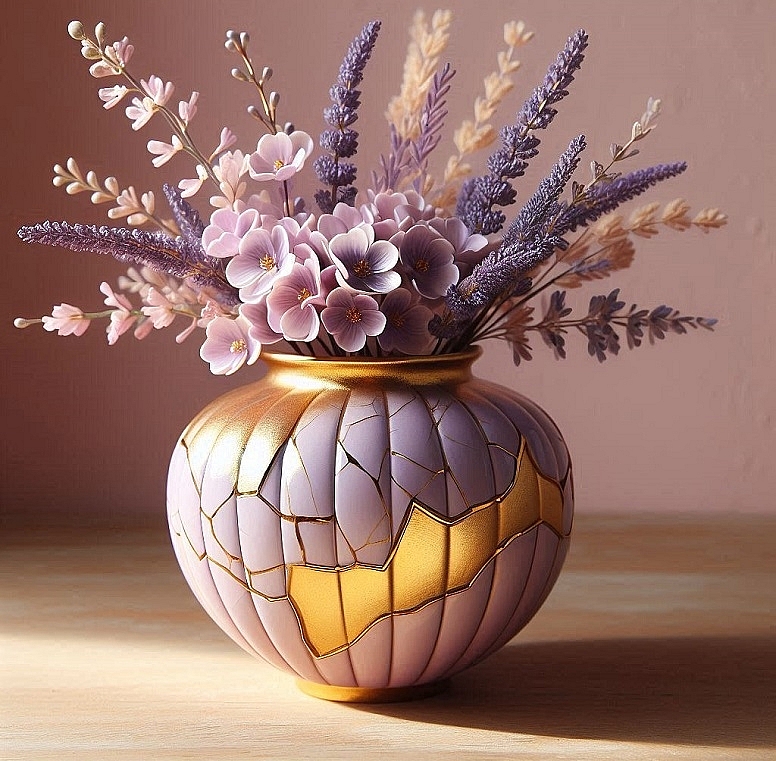
The Art of Kintsugi: Embracing Imperfection and Repair in Pottery
Kintsugi, often referred to as the "art of golden joinery," is a traditional Japanese method of repairing broken pottery with lacquer dusted or mixed with powdered gold, silver, or platinum.
Understanding Kintsugi: An Ancient Japanese Art Form
This centuries-old practice transcends mere restoration, transforming damaged ceramics into objects of beauty that celebrate their history rather than concealing it. The philosophy underlying Kintsugi is deeply rooted in the Japanese aesthetic principles of wabi-sabi, which values imperfection, impermanence, and authenticity.
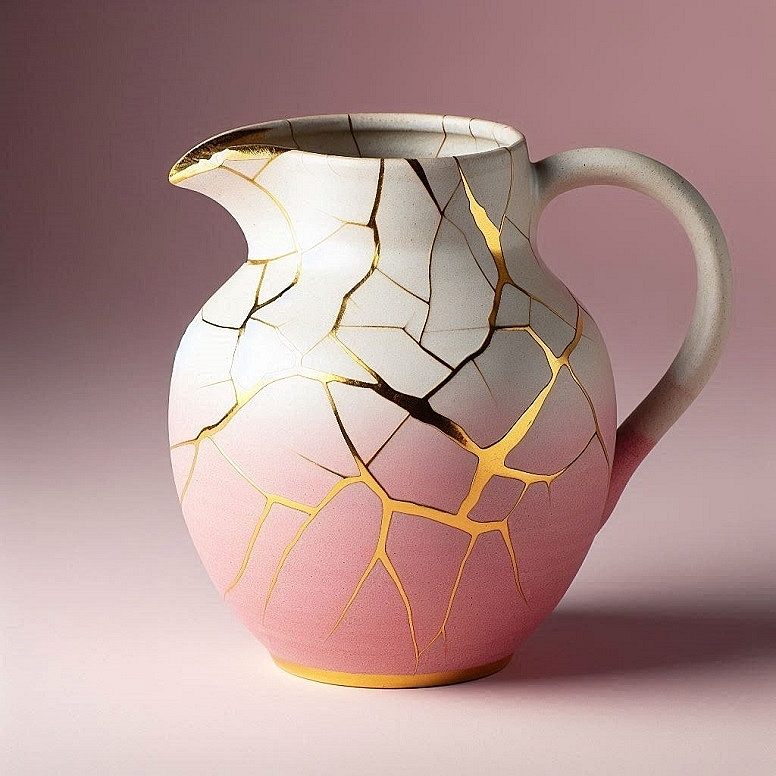
Philosophy Behind Kintsugi: Beauty in Imperfection
At the heart of Kintsugi lies a profound philosophy that embraces the imperfections and scars of life as integral parts of our existence. Rather than hiding flaws or discarding broken objects, Kintsugi celebrates them, recognizing that the process of repair can add value and beauty to an item. This ethos reflects a broader worldview that acknowledges the inevitability of change, decay, and transformation, inviting us to find beauty in the imperfect, the incomplete, and the transient. Through Kintsugi, we learn to appreciate the unique journey of each object and our own journey through life, with all its trials and tribulations.
History of Kintsugi: Origins in Japan: Traditional Craftsmanship
The roots of Kintsugi can be traced back to 15th century Japan, during the Muromachi period. It emerged as a response to the Japanese aesthetic concept of wabi-sabi, which values simplicity, humility, and imperfection. Initially practised by Japanese artisans and craftsmen, Kintsugi became closely associated with the tea ceremony, a ritualized form of social interaction centred around the consumption of matcha tea.
Evolution of Techniques Over Centuries
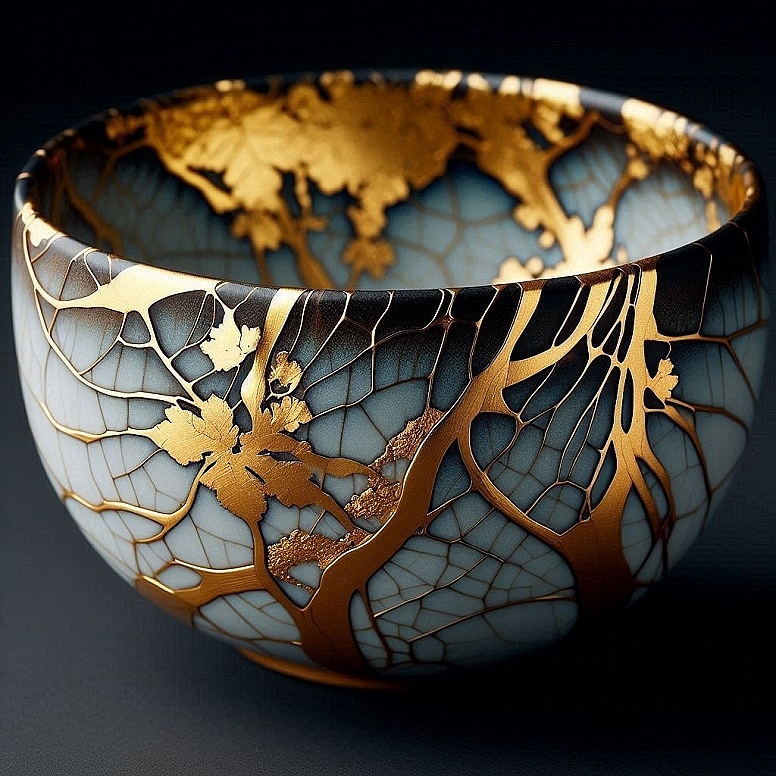
Over the centuries, Kintsugi evolved both in technique and significance. Initially, the repairs were primarily functional, aiming to restore broken pottery to its original form. However, as the practice gained popularity, artisans began to view the mending process as an opportunity for creative expression. They experimented with different materials, such as gold, silver, and lacquer, to enhance the visual impact of the repairs. This transformative approach elevated Kintsugi from a mere repair technique to a revered art form, cherished for its aesthetic appeal as much as its cultural significance.
Symbolism in Kintsugi - Metaphor for Life: Embracing Flaws and Transforming Breaks
At its core, Kintsugi serves as a powerful metaphor for the human experience, symbolizing resilience, acceptance, and growth in the face of adversity. Just as the broken pottery undergoes a process of repair and renewal, so too do we as individuals heal and evolve through life's challenges. The cracks and fractures in the pottery become symbols of our scars and imperfections, testaments to our strength and capacity for transformation. By embracing these flaws and incorporating them into the fabric of our being, we discover a profound sense of wholeness and authenticity.
Connection to Wabi-Sabi Aesthetic: Finding Beauty in Transience
Kintsugi is deeply intertwined with the Japanese aesthetic philosophy of wabi-sabi, which celebrates the beauty of impermanence, imperfection, and incompleteness. In wabi-sabi, there is an appreciation for the fleeting nature of existence, as well as an acknowledgement of the inherent beauty found in decay and ageing. Similarly, Kintsugi invites us to embrace the transient nature of life, recognizing that every break and repair contributes to the unique story of an object. In this way, Kintsugi reflects a deeper reverence for the passage of time and the cyclical rhythms of nature.
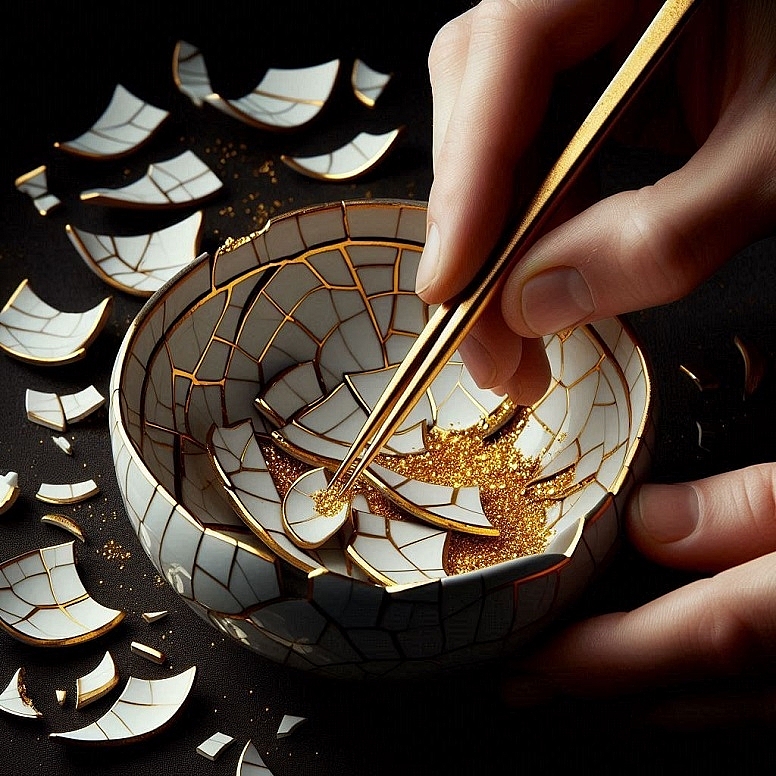
Materials and Techniques: Gold, Silver, and Other Metals: Adding Value to Imperfection
One of the defining features of Kintsugi is the use of precious metals such as gold, silver, or platinum to fill the cracks and fissures of broken pottery. These metals not only serve a practical purpose by reinforcing the structural integrity of the object but also imbue it with a sense of value and significance. The juxtaposition of the lustrous metal against the humble ceramic creates a striking visual contrast, drawing attention to the repaired areas and highlighting the beauty of the imperfections.
Urushi Lacquer: The Glue That Holds It All Together
Central to the art of Kintsugi is the application of urushi lacquer, a natural resin derived from the sap of the urushi tree. This highly durable and adhesive material serves as both a glue and a decorative element in the repair process. When mixed with powdered gold, silver, or other metallic pigments, urushi lacquer creates a seamless bond between the fractured pieces of pottery, while also imparting a rich, glossy finish to the repaired surface. The meticulous application of urushi lacquer requires skill and precision, as artisans carefully layer the lacquer to achieve a smooth and even texture.
Process Overview: Step-by-Step Restoration
The process of Kintsugi typically begins with the careful examination and cleaning of the broken pottery. Once the pieces have been thoroughly cleaned and prepared, the artisan applies a thin layer of urushi lacquer to the edges of the fractured areas, allowing it to dry partially. Next, the powdered gold or silver is meticulously sprinkled or brushed onto the adhesive surface, filling the cracks and crevices with shimmering metallic accents. After allowing sufficient time for the lacquer to cure, the excess metal is polished away, revealing the seamless fusion of the repaired pottery. The result is a stunning display of craftsmanship and artistry, where the scars of breakage are transformed into gleaming veins of gold or silver, embodying the essence of Kintsugi.
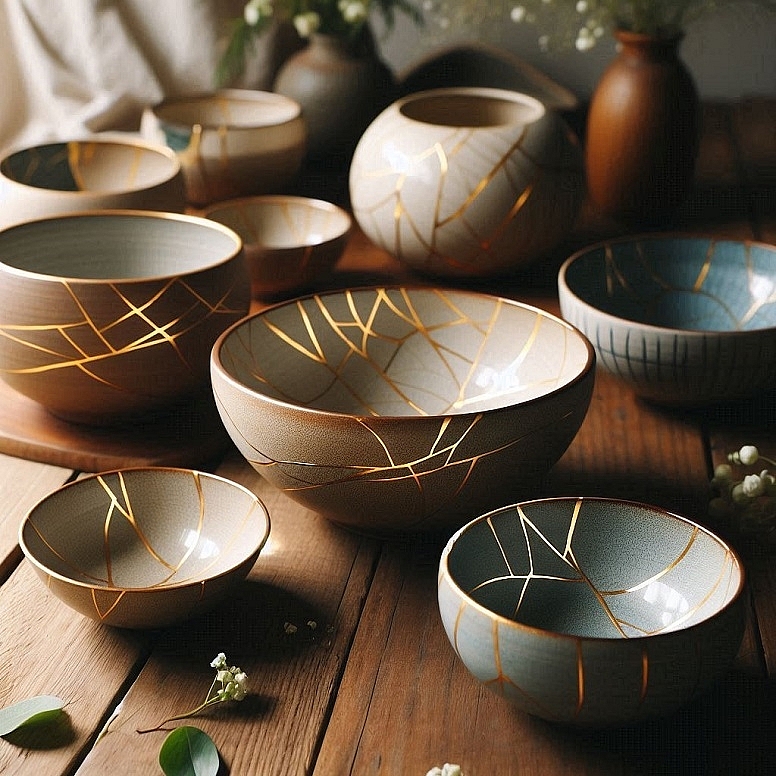
Kintsugi in Modern Art and Design: Revival in Contemporary Culture: Global Recognition and Influence
In recent years, Kintsugi has experienced a resurgence in popularity, both in Japan and around the world. As society grapples with issues of sustainability, mindfulness, and self-acceptance, the principles embodied by Kintsugi resonate deeply with a modern audience. Artists, designers, and craftsmen are increasingly drawn to the art form, captivated by its ability to breathe new life into old objects and convey profound philosophical messages.
Incorporation in Ceramics, Pottery, and Beyond
Beyond its traditional application in pottery repair, Kintsugi has found its way into various artistic disciplines, inspiring a diverse range of creative expressions. Contemporary ceramicists and potters often incorporate Kintsugi-inspired techniques into their work, intentionally leaving flaws and fractures visible or using metallic accents to highlight imperfections. In addition to ceramics, Kintsugi has influenced other forms of artistic expression, including painting, sculpture, and even digital media. Its adaptability and universality make it a compelling source of inspiration for artists seeking to explore themes of resilience, transformation, and interconnectedness.
Practising Kintsugi: Honouring the Past: Repairing Broken Pieces
Engaging in the practice of Kintsugi is not only a creative endeavour but also a deeply meaningful act of reverence and respect for the objects being repaired. Whether restoring a cherished family heirloom or salvaging a thrift find, each repair tells a story of resilience and redemption. By embracing the imperfections of the past and investing time and care into their restoration, practitioners of Kintsugi honour the history and legacy of the objects they repair, ensuring that they continue to be cherished and appreciated for generations to come.
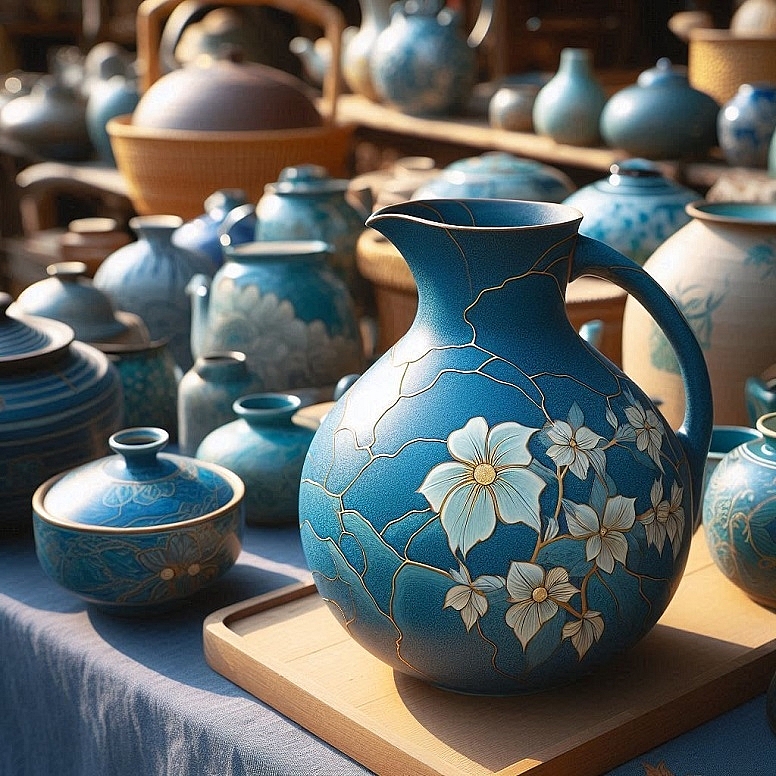
DIY Kintsugi Kits: Making the Art Accessible
To make Kintsugi more accessible to enthusiasts and beginners, DIY Kintsugi kits have become increasingly popular in recent years. These kits typically include all the materials and tools necessary to perform basic Kintsugi repairs, along with step-by-step instructions or video tutorials. By empowering individuals to try their hand at Kintsugi in the comfort of their own homes, these kits encourage creativity, experimentation, and self-expression. Moreover, they foster a deeper appreciation for the craftsmanship and artistry involved in traditional Kintsugi practices, fostering a sense of connection to its cultural heritage.
Mindful Crafting: Therapeutic Benefits of Kintsugi
Beyond its artistic and aesthetic appeal, Kintsugi also offers therapeutic benefits for practitioners. The meditative process of repairing broken pottery can be profoundly cathartic, providing a sense of focus, purpose, and accomplishment. As individuals carefully mend each fracture and delicately apply the precious metals, they engage in a form of mindfulness practice, immersing themselves in the present moment and cultivating a deeper awareness of their thoughts and emotions. In this way, Kintsugi serves not only as a means of artistic expression but also as a pathway to healing, self-discovery, and personal growth.
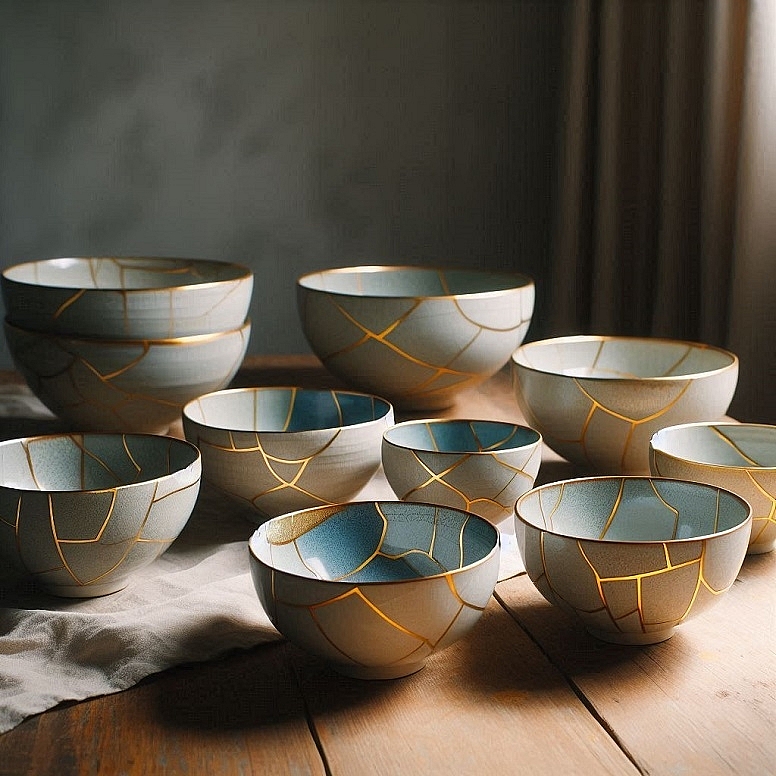
Ethical Considerations: Balancing Authenticity and Commercialization
As Kintsugi gains popularity in global markets, there is a growing concern about the commodification and commercialization of this traditional Japanese art form. While increased visibility can raise awareness and appreciation for Kintsugi, it also raises questions about cultural appropriation and ethical practices. Artisans and practitioners must navigate the delicate balance between sharing Kintsugi with a wider audience and preserving its cultural integrity. This entails respecting the historical and cultural significance of Kintsugi, acknowledging its roots in Japanese tradition, and collaborating with artisans and communities to ensure that the practice is represented authentically and responsibly.
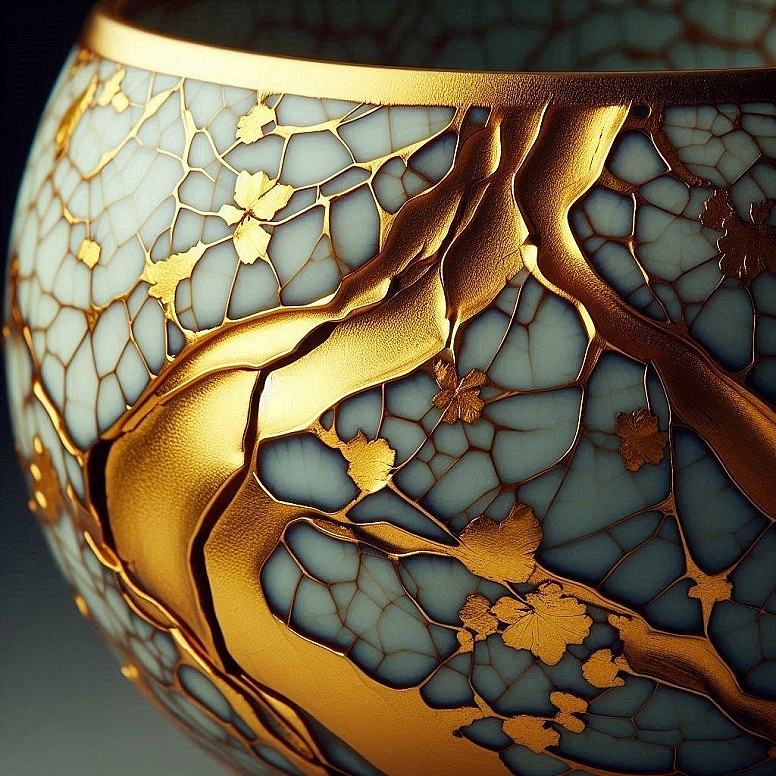
Embracing Imperfection: Lessons from Kintsugi
In a world that often values perfection and uniformity, Kintsugi offers a powerful reminder of the beauty found in imperfection and repair. Through its rich history, philosophical underpinnings, and timeless aesthetic, Kintsugi invites us to embrace the flaws and fractures that define our lives, transforming them into sources of strength, resilience, and beauty. As we engage in the practice of Kintsugi, whether as artisans, collectors, or enthusiasts, we are reminded of the interconnectedness of all things and the enduring power of transformation.
Continuing the Legacy: Preserving and Innovating in Pottery Repair
As we look to the future, it is essential to preserve and innovate upon the legacy of Kintsugi, ensuring that this ancient art form continues to inspire and enrich our lives for generations to come. By honouring its cultural heritage, fostering cross-cultural exchange, and embracing new technologies and materials, we can build upon the foundations laid by our predecessors while forging new paths of creativity and expression. In doing so, we pay tribute to the artisans and craftsmen who have kept the flame of Kintsugi alive throughout the centuries, ensuring that its message of resilience, beauty, and repair continues to resonate with us all.
0
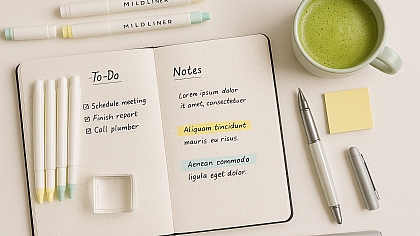


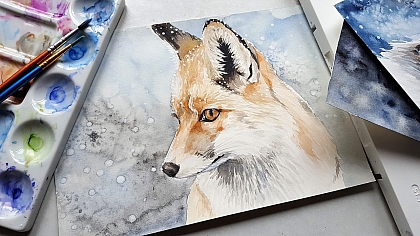

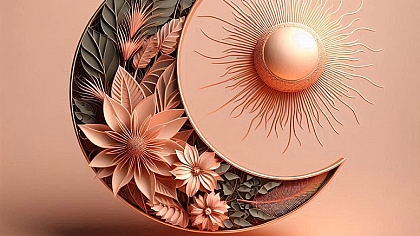
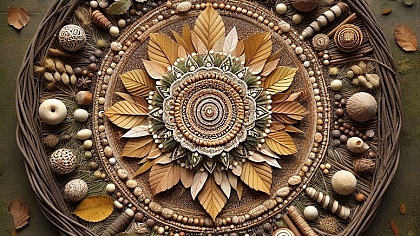
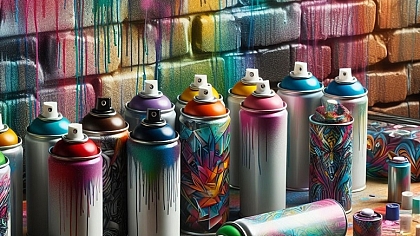

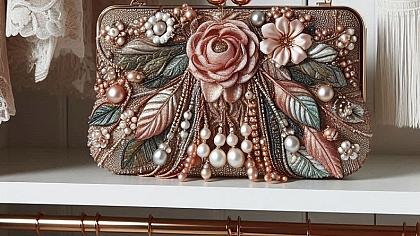
COMMENTS
I'd love to know the artists who did these pieces.
Beautiful